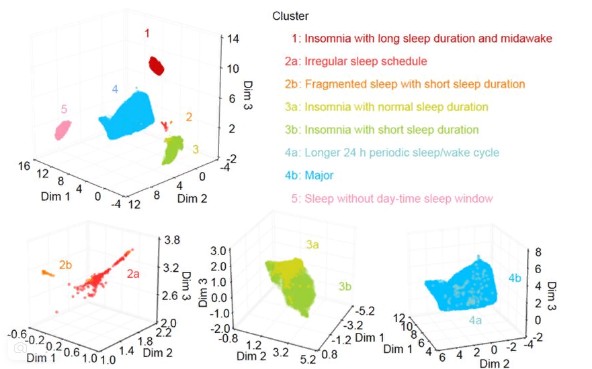Due to the variety of lifestyles, the number of people worldwide who are unhappy or disturbed about their sleep has increased in recent years.
Healthcare and medicine both need to know how people sleep in order to find out if they have a sleep disorder. Simple sleep monitoring and a quantitative understanding of each person’s sleep patterns are important.
Professor Hiroki Ueda (also a Riken team leader) and Machiko Katori of the University of Tokyo, as well as Assistant Professor Shoi Shi (RIKEN), used ACCEL, an original machine learning algorithm developed by their research laboratory, to determine sleep and waking states based on arm acceleration.
They converted the acceleration data of approximately 100,000 people in the UK Biobank into sleep data, which was then analyzed in detail.
They discovered that the sleep patterns of these 100,000 people could be divided into 16 different categories in their study, which was published in the Proceedings of the National Academy of Sciences.
The researchers began by looking at arm acceleration data from almost 100,000 people in the UK Biobank. Men and women in their 30s to 60s, mostly from the United Kingdom, were measured for up to seven days using wristband-type accelerometers.
The research team used an algorithm (ACCEL) they made in 2022 to make sleep data for about 100,000 people from the acceleration data.
The acquired sleep data was translated into 21 sleep indicators, and the sleep patterns were then grouped into eight separate clusters using dimension reduction and clustering methods.
Clusters associated with “social jet lag” and clusters characterized by mid-onset awakenings and deemed insomnia were among them, allowing clusters related to lifestyles and sleep disorders to be extracted.
The research team next concentrated on six of the 21 sleep indicators, including sleep duration and intermediate waking time, which are known to be closely related to sleep disorders, in order to examine sleep patterns associated with sleep disorders in greater depth.
They were able to classify the data into eight clusters by using the same analysis on data where one indicator deviated significantly from general sleep (data in the upper 2.28th percentile or higher in the overall distribution) or data in the lower 2.28th percentile or lower in the overall distribution.
There were morning-type clusters and evening-type clusters among them. They also found a lot of clusters that were linked to insomnia, and they were able to classify seven types of sleep patterns that were linked to insomnia by clustering the whole dataset together.
They discovered the topography of the human sleep phenotype by analyzing sleep on a broad scale. This research has allowed for the quantitative classification of lifestyle clusters such as “social jet lag” and “morning/evening kinds,” which are difficult to establish with short-term PSG measures.
A thorough examination of outliers and classification of sleep patterns found seven insomnia-related clusters. These clusters are made up of new markers that don’t work the same way as traditional methods, and they’re meant to help with the development of new ways to diagnose insomnia and suggest treatment options.





